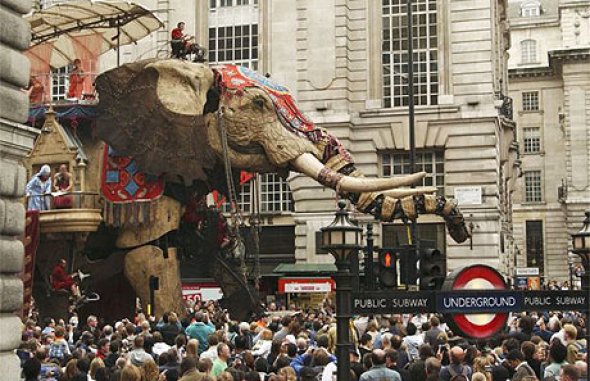CRITIQUE OF CREATIVITY
James Heartfield reviews Critique of Creativity: Precarity, Subjectivity and Resistance in the ‘Creative Industries’, Gerald Raunig, Gene Ray and Ulf Wuggenig (Eds.), Mayfly, 2011
This collection of papers from a conference in Helsinki takes issue with the boosting of the creative industries, pointing to the way such boosting accords with neoliberal employment practices and greater job insecurity.
Raimund Minichbauer, pointing to a number of European Union conferences on the creative industries, writes that ‘the terms “creativity” and “creative industries” (or even “creative economy”) seem to be proliferating in EU cultural policy’, but ‘it seems to be a set of terms that has no clear outline’. (p 159) In Germany the SPD Schroeder government set in motion ‘a transformative shift towards a culturalisation of the economy and a corresponding economisation of culture’, argues Marion von Oston (p 133).
‘The discourse of “creative and cultural industries” penetrates at both national and supra-national levels’, writes Esther Leslie (p 183) and mocks the former Cultural Secretary Chris Smith’s claims as crowing about ‘culture’s magical powers of wealth generation’ (p 184). Monika Mokre takes up what she calls the Creative Industries (CI) hype arguing that ‘definitions of the CI are delivered that are too broad to be really classified as definitions’, and that ‘on the basis of these definitions statistical data prove that the CI are (1) a crucial economic sector with (2) virtually limitless future possibilities’. Mokre mocks those policy documents that claim that ‘the country or city in question has especially favourable conditions for this sector’. (p 110)
Esther Leslie points to the irony that ‘theorists who once professed to adhere to some type of Marxism now promote culture as the benevolent and ameliorating face of capitalism’ – pointing to the example of Tony Bennett ‘leading Australian proponent of Cultural Studies’ who went on to champion the creative industries policy (p 186). Angela McRobbie makes a similar point, saying that ‘what is also by-passed in the new discourse of creative self-realisation is the intellectual landscape of critical aesthetics certainly associated with the Marxist philosophical tradition’ (p 130). McRobbie takes issue with the 2001 Green Paper’s claim that ‘everyone is creative’, ‘what in the past was considered the icing on the cake, has now become a main ingredient of the cake’ (p 120).
Marion von Oston’s research into the working lives of designers and other creative workers in Zurich found that they were for the most part not widely integrated into industry, but mostly self-employed professionals coming out of the alternative cultural scene. (p 144) Von Oston suggests that the paradigm of creative workers fits Swiss government policy, set out in the Hartz Commission to push the unemployed into ‘freelance’ entrepreneurial work. (p 137)
Suggestively, von Oston argues that the ‘discussion about creativity and cultural labour has an impact on the conceptualisation of labour, subjectivity and society as a whole’ (p 135) – in other words working people across society are being sold an ideal of ‘creativity’ at work.
As a collection, the Critique of Creativity is full of great insights and suggestive lines of research. We can only look forward to the different contributors’ development of their arguments in future works.
James Heartfield has written on the Creative Industries in Creativity Gap http://independent.academia.edu/JamesHeartfield/Books/145300/The_Creativity_Gap
Creative London http://www.uel.ac.uk/risingeast/archive07/debate/heartfield.htm and Creativity as Ideology http://independent.academia.edu/JamesHeartfield/Pa...
Mute Books Orders
For Mute Books distribution contact Anagram Books
contact@anagrambooks.com
For online purchases visit anagrambooks.com







